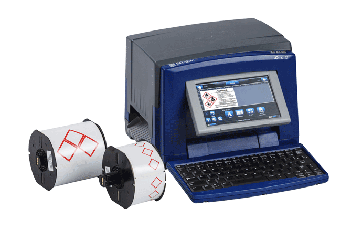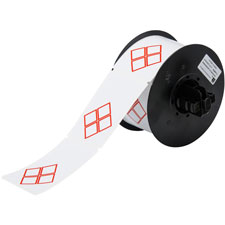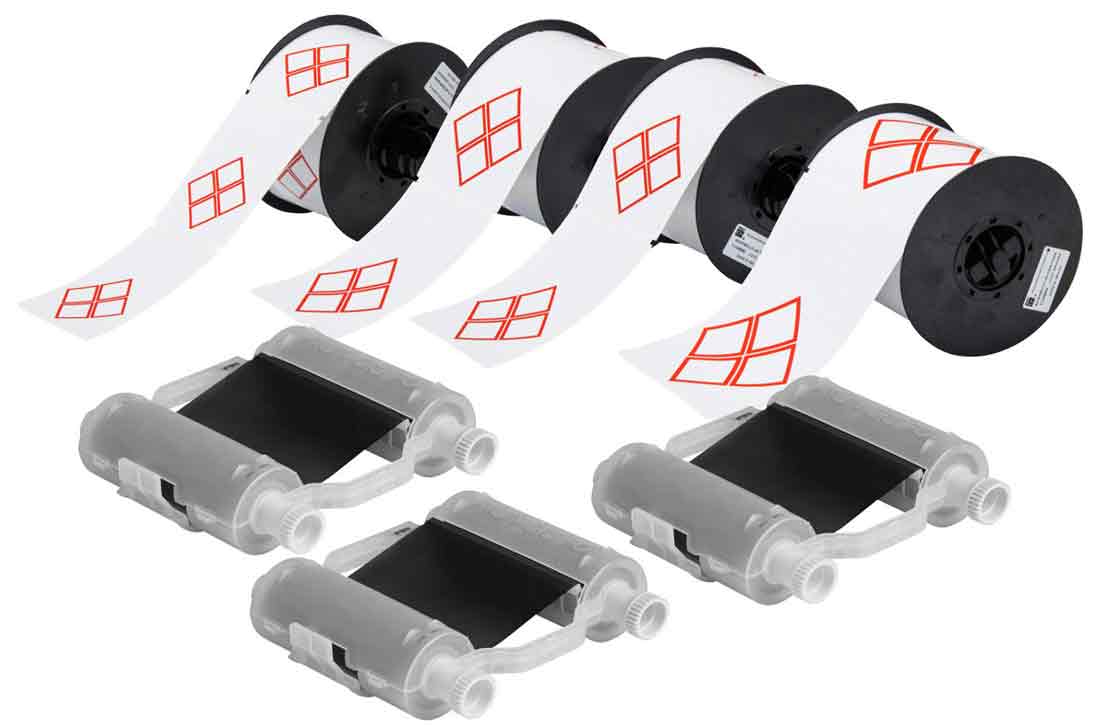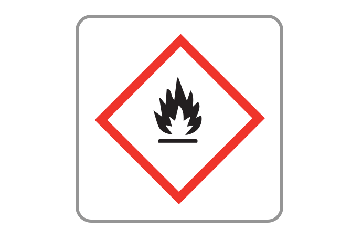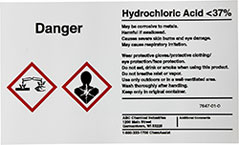Labels by Sign and Label Printer
Paint Stripe Floor Marking Stencils
Valve Lockouts & Hose Lockouts
Safety and Facility Signs and Labels Software
Wire and Component Label Software
Product Identification Label Software
Lockout Tagout Procedures and Tags
SmartID Aerospace RFID Solutions
- Confined Space Signs
- Construction Site Signs
- Electrical and Arc Flash Signs
- First Aid Signs
- Forklift and Warehouse Safety Signs
- Lockout Tagout Signs
- Machine Operation Signs
- Maintenance Signs
- Marine and IMO Signs
- Personal Protection (PPE) Signs
- Radiation and Laser Signs
- Safety Awareness and Compliance Signs
- Slip, Trip and Floor Obstacle Hazard Signs
- Blank Pipe Markers
- IIAR Ammonia Pipe Markers and Components
- Pipe Markers for Acids and Bases
- Pipe Markers for Air and Ducts
- Pipe Markers for Fire Systems
- Pipe Markers for Gases
- Pipe Markers for Maintenance and Operation
- Pipe Markers for Oil
- Pipe Markers for Other Liquids
- Pipe Markers for Steam
- Pipe Markers for Water
Pipe Marker Accessories & Mounting Brackets
Maintenance and Production Tags
Aerospace, Defense and Mass Transit
Datacom , Telecom Identification
Globally Harmonized System (GHS) Labeling Requirements
GHS Frequently Asked Questions
Q. What is the GHS?
A. GHS stands for Globally Harmonized System. The GHS is an international regulation that the United Nations (UN) has created for the Classification and Labeling of Hazardous Chemicals.
Q. Why is GHS being implemented?
A. Without the GHS, countries around the world are left to determine their own standards for what chemicals are hazardous – and how to properly communicate those hazards. Each country handles this differently, which creates confusion and complexity for international manufacturers. The GHS is intended to create a single, universal format for hazard communication across the globe.
Q. When was GHS implemented in the U.S.?
A. OSHA published an updated Hazard Communication standard in March, 2012. There is a three year transactional period to allow companies to fully implement the new HazCom standard in their facilities.
Q. When do I have to comply?
A. The full GHS compliance deadline is June 1, 2016. After that date, hazard communication and workplace labeling programs, processes and documents must be updated. For chemical distributors, the next deadline is December 1, 2015, when products must be shipped with updated Safety Data Sheets (SDS) and chemical labels.
Q. How will labels change?
A. GHS labels will now include six standardized elements, including:- Hazard Pictograms: There are nine pictograms with black and white images outlined in a red diamond to visually identify hazards.
- Signal Words: Used to convey the level of severity of the hazardous chemical (either “Danger” or “Warning”)
- Product Name or Identifiers
- Hazard Statements: Assigned phrases in relation to hazard classes and hazard categories that detail the chemical’s hazards.
- Precautionary Statements: Detailed measures assigned to hazard statements given to minimize or prevent the adverse effects from physical,
health, or environmental hazards. - Manufacturer Information
To see all GHS labels, visit bradyindia.co.in/ghs
Q. What's the difference between a "shipped" and "workplace" label?
A. Shipped or primary container labels are used on any container leaving the workplace. These labels must have the six required elements of a GHS chemical label.
A workplace or secondary label container does not always fall under the same requirement. Best practice is to match this label to the primary container label for consistency. However, other labeling options can be used as long as they contain chemical words, pictures, symbols or any combination of these to convey all the physical and health hazards
of the chemical.
Q. What if the container is too small for a label?
A. When a container is small, you must use pull-out labels, fold-back labels, tags and other methods for identification. If this is still not feasible, OSHA has issued a practical accommodation for the information on the label. This includes, at a minimum, the product identifier, pictograms, the manufacturer’s name and phone number, signal word and a statement that full information is provided on the outside package.
Q. Should I buy pre-printed labels or a printing system?
A. A general rule of thumb is to order pre-printed labels if you only need a low volume (up to a few hundred labels), find it difficult to justify the cost of a printer investment and can handle a 2-4 day lead time. Pre-printed labels could also be used for very high volumes (e.g. thousands of labels) using the same text, the need for high print speeds and when you can accommodate a 1-2 week lead time.
A printing system and print-it-yourself method is ideal for medium volume printing (e.g. several hundred to a few thousand), when a medium print speed is needed. This gives you the flexibility to print other safety labels and customize workplace messaging. There is no lead time as labels can be made right when you need them. In addition, templates and data can be stored for later use. To see all pre-printed GHS labels, visit bradyindia.co.in/ghs
Q. Where is GHS currently being implemented?
A. The European Union has already begun implementing many parts of the GHS regulation. Countries and regions around the world are beginning to implement it, each with their own individual timeline.
Although it is an international standard, there is not one specific international implementation schedule. The GHS is a voluntary regulation set forth by the UN; each nation’s government is responsible for overseeing the regulatory changes and compliance.
Q. How does the GHS impact OSHA’s existing Hazard Communication regulation, CFR 1910.1200?
A. The GHS is applied within the current framework of OSHA’s existing hazard communication regulations. The GHS is not intended to replace OSHA’s standards, but instead update and add internationally harmonized compliance to its schematics. For example, OSHA is expected to require hazard pictograms/symbols to all of the chemical labeling.
Q. Who is affected by the new GHS?
A. The GHS will affect chemical suppliers, manufacturers, end users, and testing laboratories. Any workplace that is currently subject to the Hazard Communication regulations is affected.
Q. What are the biggest changes that I need to know about?
A. There are 3 key changes that will be made during the implementation of the GHS:
- Classification of chemicals. The GHS establishes new criteria for classifying hazardous chemicals that is broader than the existing standards.
- Standardized label format. All chemical labels have a standardized format with the certain headings and phrases to describe the various hazards.
- Standardized Safety Data Sheets (SDS). The GHS Safety Data Sheets have a standard 16-section format with specific information required for each section.
Q. Where can I access information on hazard statements and precautionary statements for the GHS labeling?
A. All of the elements of the GHS labeling system can be found and accessed in Annex 1-3 of the UN’s 3rd revised edition of the Globally Harmonized Standard for Classification and Labeling of Chemicals, found on their website.
Q. Is there additional employee training needed for the GHS?
A. Yes, employees will need to be trained in order to recognize and understand the new labels, pictograms and SDS information. Employees need to learn how to interpret the pictograms and new hazard statements, and know what precautions must be taken for chemical products. The GHS is a bit more complex than the previous standards, and training is very important to ensure that the GHS is an added safety measure in the workplace. Check out the GHS Training Kit for more information.
Q. What are the GHS labeling elements?
A. The standardized elements required for GHS labels are:
- Hazard Pictograms: There are nine pictograms in total that symbolize health, physical and environmental hazard information. The pictograms are black and white images outlined in a red diamond.
- Signal Words: Either “Danger” or “Warning” is used to convey the level of severity of the hazardous chemical.
- Hazard Statements: Assigned phrases in relation to hazard classes and hazard categories that detail the chemical’s hazards.
- Precautionary Statements: Detailed measures assigned to hazard statements given to minimize or prevent the adverse effects from physical, health, or environmental hazards.
See all of Brady's GHS labels.
Q. What are the benefits of the GHS?
A. The GHS makes it easier for employers, employees and the public to understand the hazards of chemicals, and take the necessary preventive and protective measures for their safety and health. It also offers a number of benefits for our government, companies and general public.
According to OSHA, here are the key benefits of GHS implementation:
- Enhance the protection of human health and the environment by providing an internationally comprehensible system. by providing an internationally comprehensible system,
- Provide a recognized framework to develop regulations for those countries without existing systems.
- Facilitate international trade in chemicals whose hazards have been identified on an international basis.
- Reduce the need for testing and evaluation against multiple classification systems.
- Learn more at https://www.osha.gov/dsg/hazcom.html
Q. How does GHS affect the labeling requirements for shipping containers or secondary storage containers?
A. The GHS requires proper labeling when shipping or storing chemicals. The labels should be on the individual chemicals, as well as on the outside of the larger boxes or drums that are used to ship or store the chemicals. Proper DOT labeling must also be present that corresponds correctly with the GHS labeled chemicals.
Q. We purchase preprinted labels with 4 blank diamonds. Can we black-out out the ones we don’t use?
A. A blank diamond red frame set on point is not a pictogram and is not permissible under HCS2012. Black-out option is compliant but then red frame of the blank diamond must be fully covered.
Q. When is an employer required to replace their MSDS with revised SDSs?
A. Manufacturers, importers, and distributors should have started providing SDSs on June 1, 2015. All employers must have, maintain, and make available to employees the most recent MSDS or SDS received.
Q. Are pictogram labels with adhesive backing compliant under Appendix C, 29CFR1910-1200?
A. Pictogram labels with adhesive backing on a label that are sufficiently wide to be clearly visible are acceptable.
Q. Are hard copies of SDSs required?
A. From OSHA Brief 3696 Steps to Effective Hazard Communication, electronic copies are permitted, however you must have a back-up system in event of power failure and/or equipment failure of the primary system. Employees must be trained on how to use system and obtain hard copies if needed. In medical emergency, hard copy SDS's must be immediately available to emergency personnel.
Q. Would OSHA cite employers who only have an MSDS available?
A. OSHA would not issue citations for maintenance of MSDSs when SDSs have not been received. As OSHA explained in a January 2013 letter, employers may, but are not required to, contact manufacturers or distributors of products they have previously ordered to request new SDS's.
Q. What type of GHS label is required when moving chemicals from one facility to another?
A. The non-official response from the Dept. of Labor states that All containers moved from one facility to another (unless its immediately used by the person performing the transfer) must be labeled in accordance with (f)(1) – full 6 label elements.
Q. What GHS label do I need to put on the byproduct waste (hazardous) from the lab?
A. Hazardous Waste labeling is not covered by HCS2012. It’s covered by the EPA under the RCRA Act (Resource Conservation and Recovery Act).
Q. How can manufacturers of formulated (mixed) products comply by June 1st deadline if the upstream chemical manufacturers don’t supply SDS’s substantially before this deadline?
A. From the July, 2014 OSHA Letter of Interpretation, clarified on May 29, 2015, OSHA is not changing the timeline but will use discretion in enforcing the standard if reasonable diligence and good faith efforts have been pursued.
This includes: Documenting efforts to obtain information from upstream suppliers, providing a written account of continued correspondence, using alternative sources (e.g. chem databases) to find information, and attempting to classify the chemical yourself.
Q. What if a distributor cannot comply by Dec. 1 due to inability of the manufacturer to comply by June 1?
A. From OSHA’s clarification memo May 29, 2015, HCS2012 permits distributors to ship with HCS1994 labels until Dec 1, 2015 and if distributor cannot comply, a compliance officer must determine whether distributor has evidence it exercised reasonable diligence and good faith to comply.
This is handled on a case-by-case basis and distributors must present documentation of any and all communications with the manufacturer or importer regarding its reasons for noncompliance with HCS2012.
Q. Since GHS is a globally harmonized system, are my SDSs valid worldwide?
A. No, GHS is a voluntary international system that implements the framework for standardizing compliance regulations, such as converting MSDS’s to SDS’s. Countries like the US have the option to adopt and implement it freely. Only competent authorities such as EPA, OSHA and Health Canada, have the authority to decide which GHS building blocks to incorporate.
Q. We have small secondary containers that won't fit the matching primary label, what do I do to comply?
A. For secondary containers, if it does not leave your facility, you can use a workplace label with the current HazCom 1994 labels, or use the chemical identifier (words, pictures, symbols) in combination with the other identification.
Q. How do you address training of temporary workers?
A. Host employers need to treat temporary workers as they treat existing employees. Temporary staffing agencies and host employers share control over the employee, and are therefore jointly responsible for temp employee's safety and health. It is essential that both employers comply with all relevant OSHA requirements. The host employer and the temporary agency have to work together to ensure that temporary workers receive all required training.
Q. How long does a distributor need to hold on to a SDS after a product is discontinued and not stocked anymore?
A. Distributors are responsible for ensuring that their customers receive an SDS the first time a product is shipped and with the first shipment after the SDS is updated or changed. OSHA does not have any retention regulations for distributors for products they pass through to the end consumer.
Q. For a manufacturer, are there different labeling requirements for in process and final storage tanks as opposed to containers of our product?
A. Products falling within the scope of the GHS will carry the GHS label at the point where they are supplied to the workplace, and that label should be maintained on the supplied container in the workplace. The GHS label or label elements can also be used for workplace containers (e.g., storage tanks). However, OSHA allows a system of labeling that meets the requirements of HazCom 1994. The employer may continue to use this system in the workplace as long as this system, in conjunction with other information immediately available to the employees, provides the employees with the information on all of the health and physical hazards of the hazardous chemical.
Q. Does the new standard allow employees to use secondary containers without labels if the material is being used by the initial employee?
A. Yes, this has not changed. No labeling requirements if the material will be under the control of and used only by the person who transfers it from a labeled container and only within the work shift in which it is transferred.
Q. Are laboratories exempt from GHS labeling requirements?
A. No. The following regulations pertain to GHS labeling requirements.
1910.1200(b)(3)(i): Employers shall ensure that labels on incoming containers of hazardous chemicals are not removed or defaced.
1910.1200(b)(3)(iii): Employers shall ensure that laboratory employees are provided information and training in accordance with paragraph (h) of this section, except for the location and availability of the written hazard communication program under paragraph (h)(2)(iii) of this section.
1910.1200(b)(3)(iv): Laboratory employers that ship hazardous chemicals are considered to be either a chemical manufacturer or a distributor under this rule, and thus must ensure that any containers of hazardous chemicals leaving the laboratory are labeled in accordance with paragraph (f) of this section, and that a safety data sheet is provided to distributors and other employers in accordance with paragraphs (g)(6) and (g)(7) of this section.

